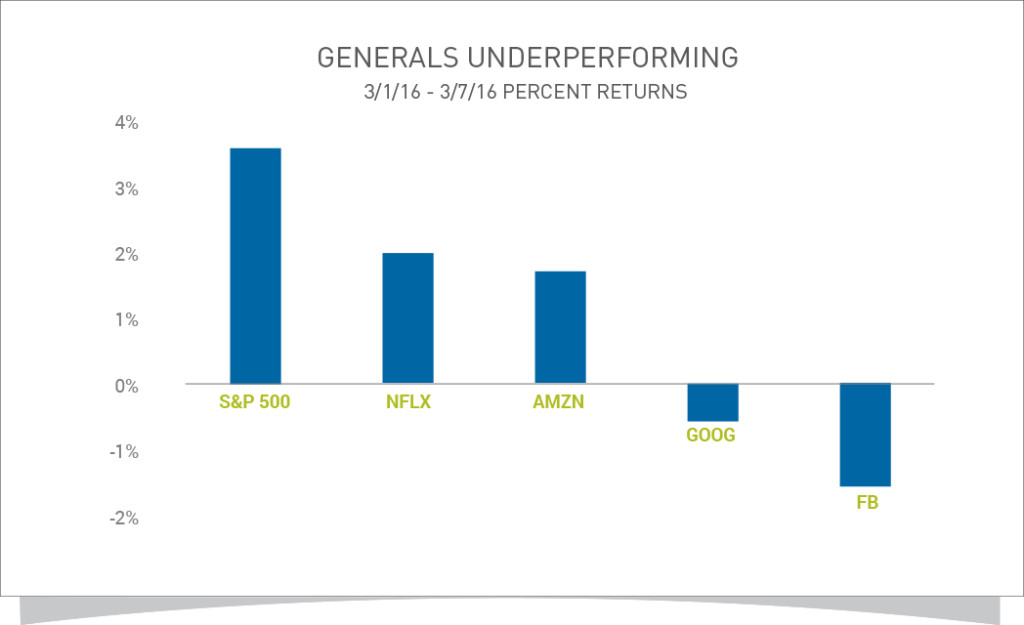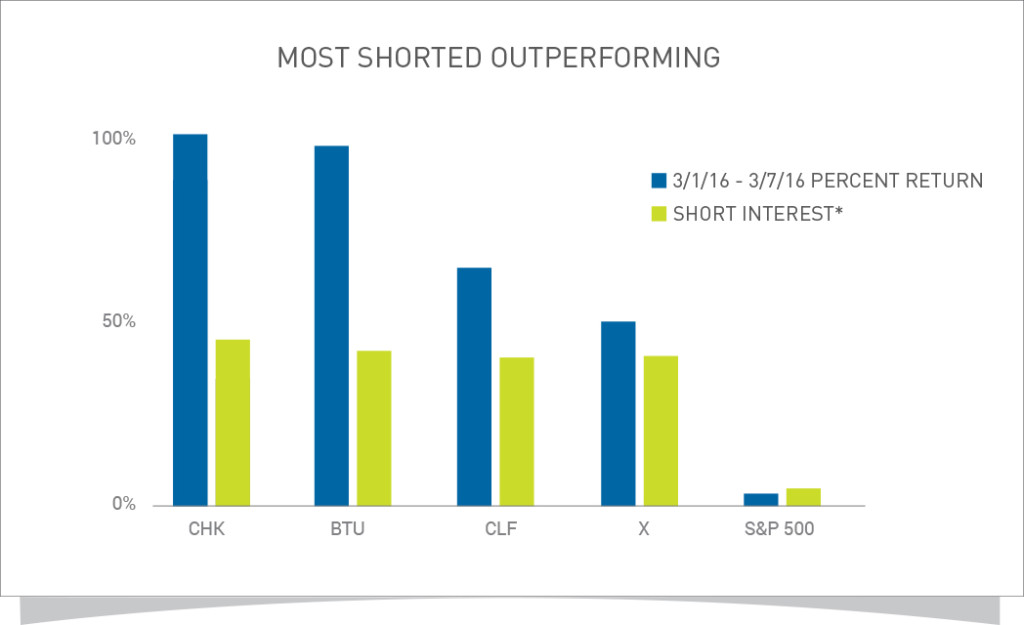A New Bull or Bear Market Rally?
By Ross Hendricks
March 10, 2016
The bulls have regained some lost ground — the S&P 500 cleared the 2,000 level Monday – leading some to claim victory over the bear case. However, once you dig deeper these claims may seem premature.
What you’re seeing
The market’s previous “generals” have stopped leading the charge higher during recent market rallies. These include momentum names like the FANGs (Facebook, Amazon, Netflix and Google), which in 2015 generated double-digit sales growth and outperformance of the broader market.
The index shown is for informational purposes only and is not reflective of any investment. As it is not possible to invest in the index directly, the data shown does not reflect or compare features of an actual investment, such as its objectives, costs and expenses, liquidity, safety, guarantees or insurance, fluctuation of principal or return, or tax features. Past performance is no guarantee of future results.
The timeframe shown was chosen to correspond with our weekly portfolio update and to provide commentary on recent market movements.
The recent growth rate in the stock market has helped to produce short-term returns that are not typical and may not continue in the future. Because of ongoing market volatility, performance may be subject to substantial short-term changes.
S&P 500: A stock market index based on the market capitalization of 500 leading companies publicly traded in the U.S. stock market, as determined by Standard & Poor’s. In this post, the S&P 500 is presented as a total return index, which reflects the effects of dividend reinvestment.
But now the double, even triple-digit gains stem from the most heavily-shorted stocks in the market. These include commodity producers like Chesapeake (CHK), Peabody Energy (BTU), Cliff’s Natural Resources and U.S. Steel (X) – each of which experienced 50% or greater declines last year.
The examples represented in the graphs above are not meant to represent fund performance. Rather, the examples demonstrate the shift in market dynamics. Last year’s top performers (like Facebook, Amazon, Netflix and Google) are now underperforming the broader market and we’re seeing outperformance among highly shorted stocks (like Chesapeake, Peabody Energy, Cliff’s Natural Resources and U.S. Steel). The securities mentioned in the examples are not current fund holdings and are not meant to be investment advice. The timeframe shown was chosen to correspond with our weekly portfolio update and to provide commentary on recent market movements.
The recent growth rate in the stock market has helped to produce short-term returns that are not typical and may not continue in the future. Because of ongoing market volatility, performance may be subject to substantial short-term changes.
How it could affect you
Dramatic appreciation in heavily indebted and shorted stocks is historically a feature of short-covering, bear market rallies. Since the strength in these highly-shorted names has not been matched by the former generals, it seems the battle between bull and bears isn’t over yet.
In any event, we believe investors can benefit by maintaining allocations to strategies with the best chance of providing non-correlated returns in the current environment.
The index shown is for informational purposes only and is not reflective of any investment. As it is not possible to invest in the index directly, the data shown does not reflect or compare features of an actual investment, such as its objectives, costs and expenses, liquidity, safety, guarantees or insurance, fluctuation of principal or return, or tax features. Past performance is no guarantee of future results.
S&P 500: A stock market index based on the market capitalization of 500 leading companies publicly traded in the U.S. stock market, as determined by Standard & Poor’s. In this post, the S&P 500 is presented as a total return index, which reflects the effects of dividend reinvestment.
PAST RESULTS ARE NOT NECESSARILY INDICATIVE OF FUTURE RESULTS. THERE IS NO GUARANTEE THAT ANY INVESTMENT WILL ACHIEVE ITS GOALS AND GENERATE PROFITS OR AVOID LOSSES.
Tags: Commodities, Investment strategy, Long-term trends, Portfolio diversification, Trend following, Trends


